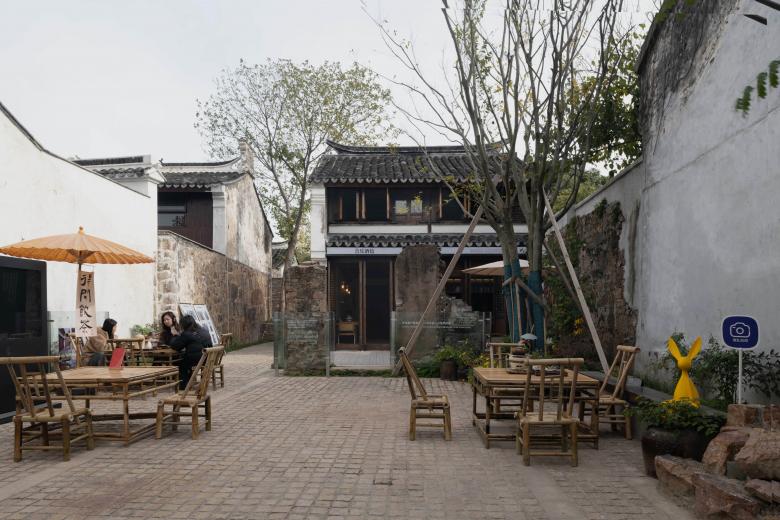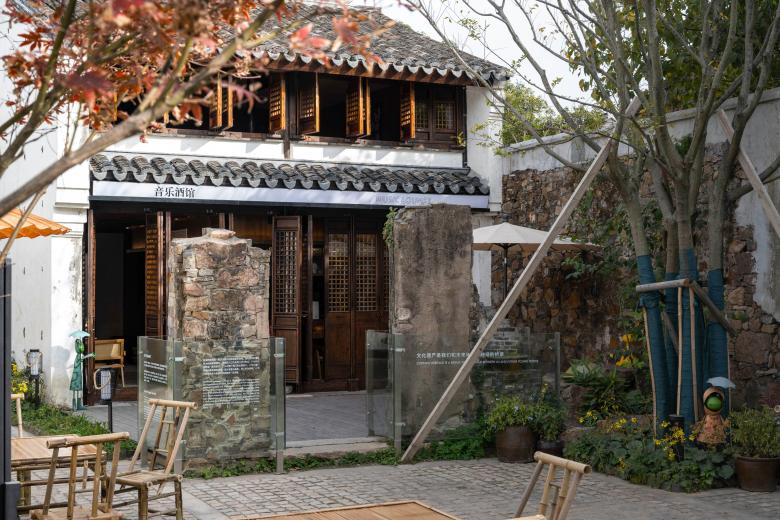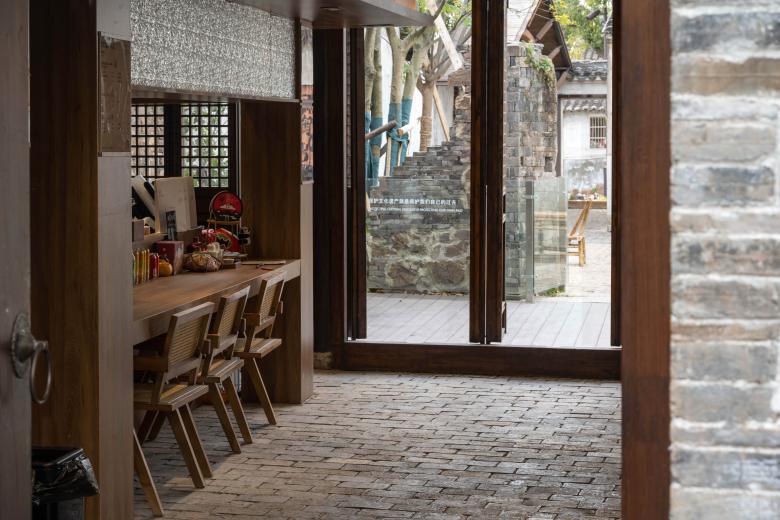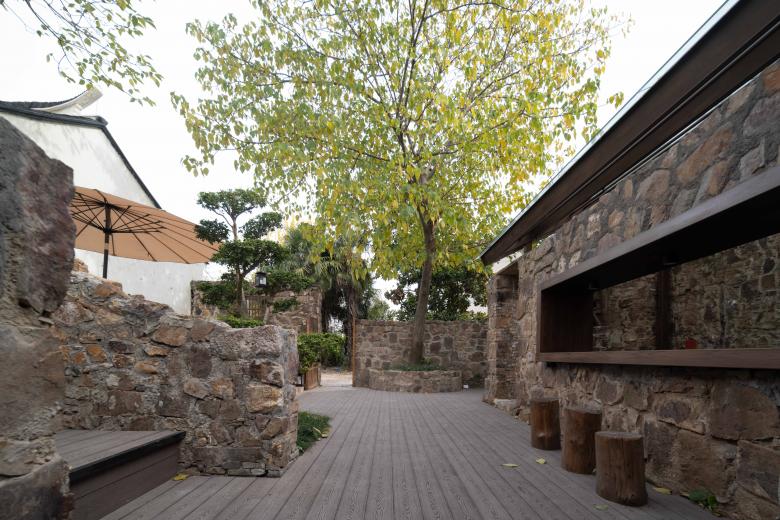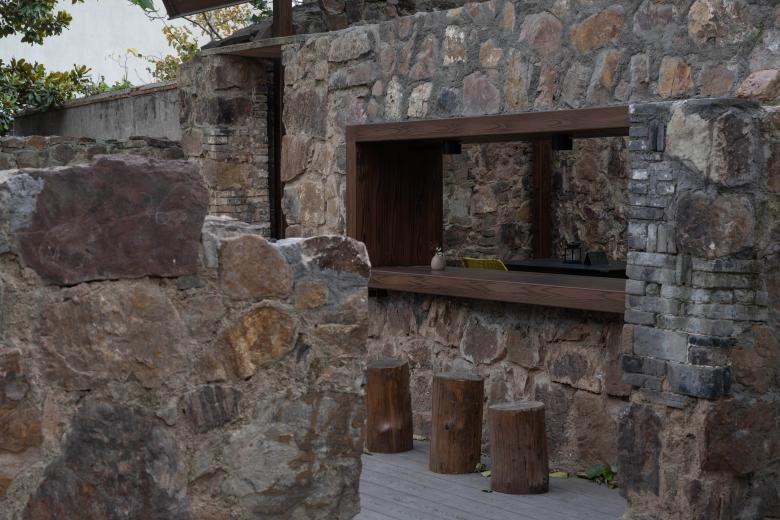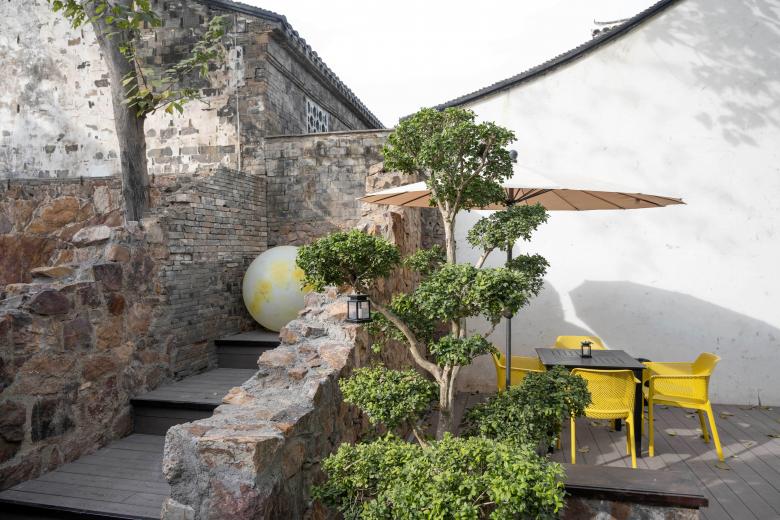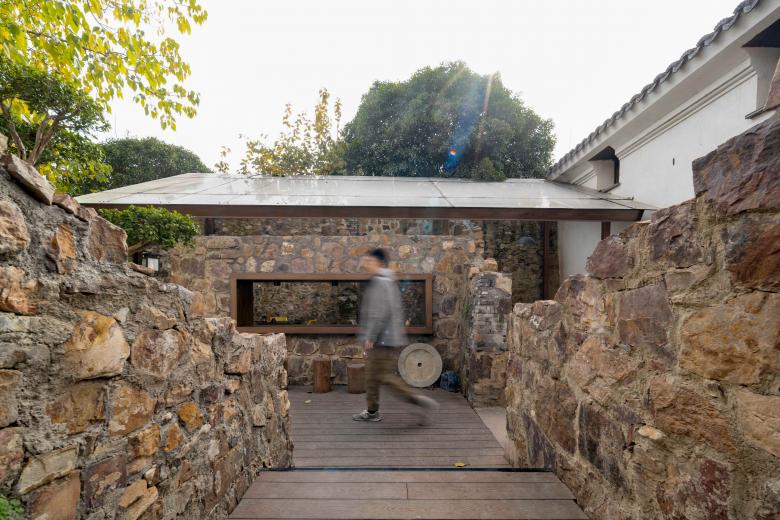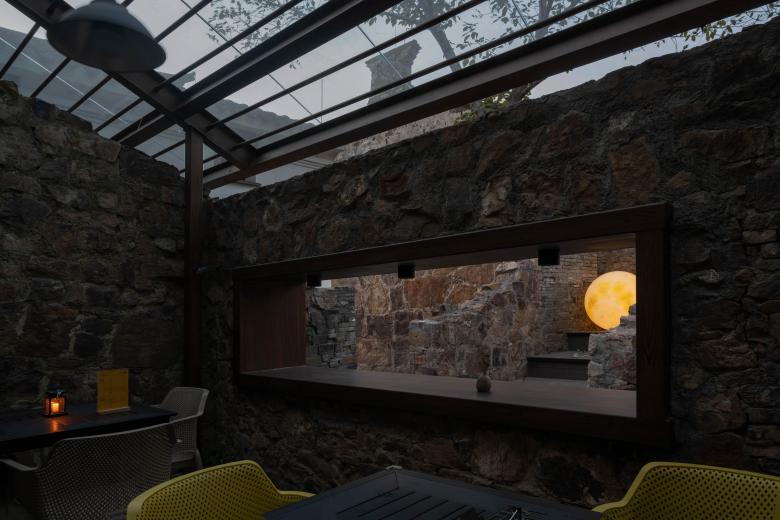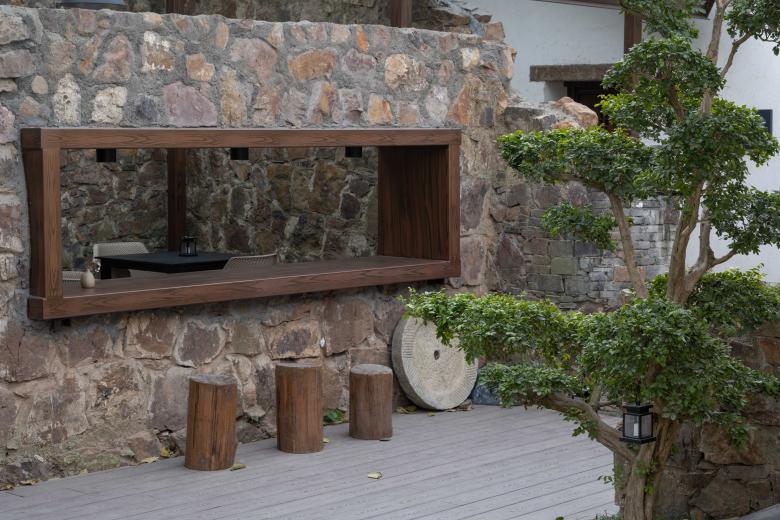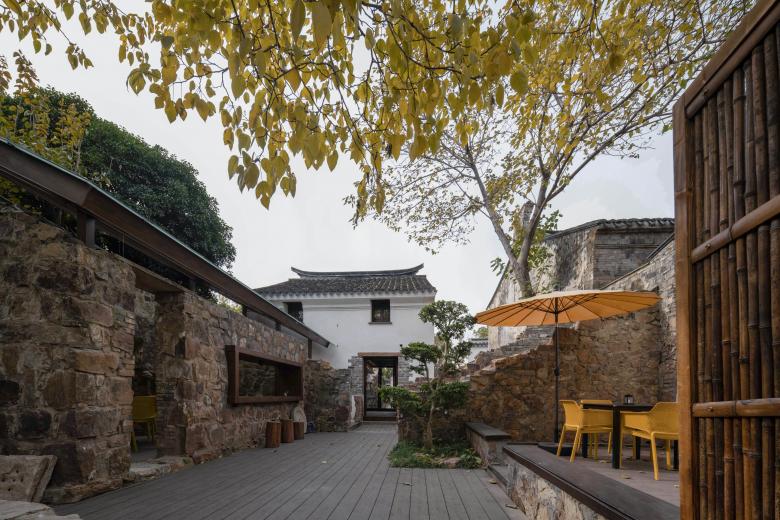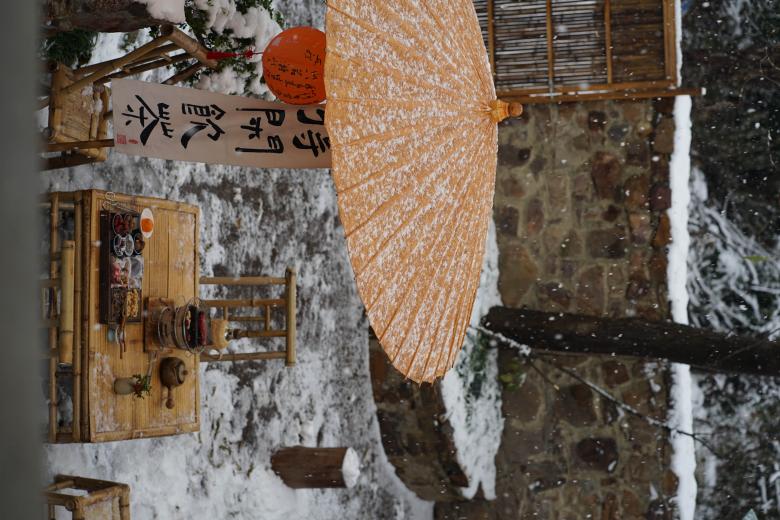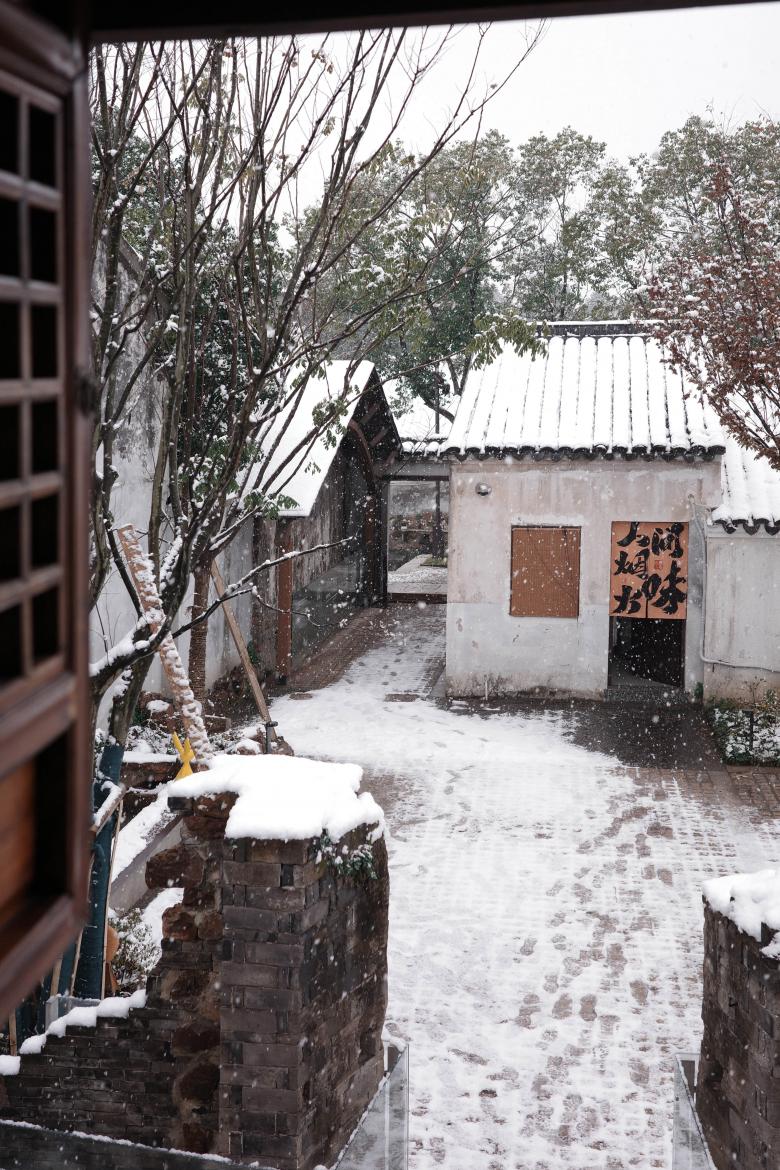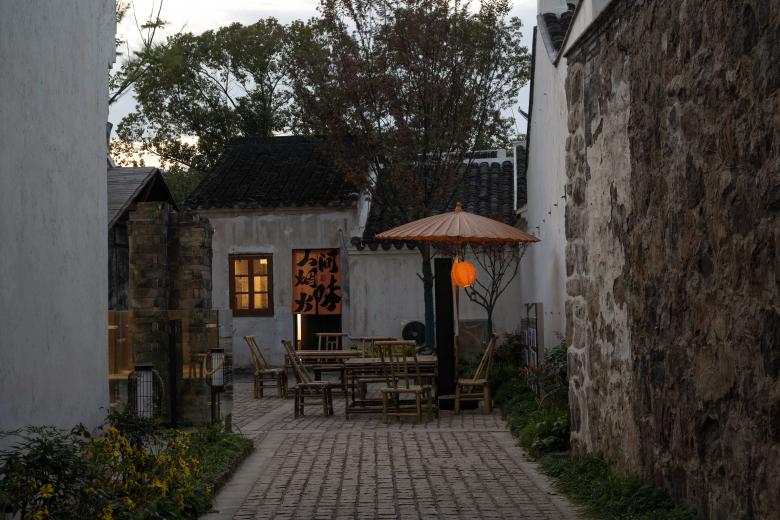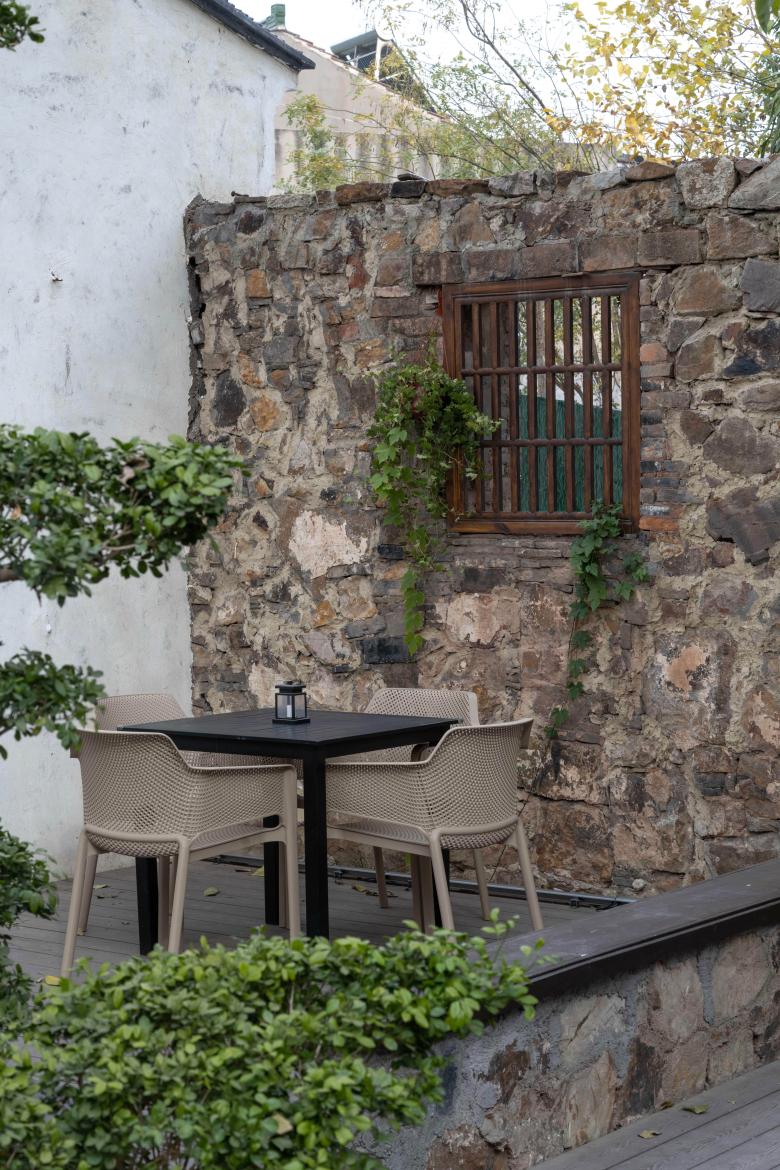Located in the core area of Changzhou's Jiaoxi Ancient Town, the "Shijia courtyard" was originally a three-entry residence. Since most buildings have collapsed and been damaged, only one main building and the remaining yellow stone half-walls remain on site. Protecting, repairing, revitalising, and utilising historic buildings are among the most effective ways to fight against time and amnesia. Before our intervention, the Architectural Design and Research Institute of Southeast University had already repaired the remaining buildings. The design of this case hopes to create a small courtyard as a tavern that can connect the ancient and the modern and revitalize the courtyard that was once in ruins. Wandering around the old houses in the alleys with the smell of wine, walking on the stone paths preserved since the Kangxi period, sitting in the courtyard with yellow stone and half-walls in the afternoon, enjoying the autumn colours and making tea around the stove, will become an excellent way for people to experience this ancient water town.
Jiaoxi Ancient Town, built along the Longxi River, has more than 700 years of history. Along the Longxi River are 11 cultural heritage units and 26 historical buildings, which are the deep imprints of the bustling life on both sides of the Longxi River.
"Shijia courtyard" is named after the rare surname "Shi", which is currently less than 9,000 in the country. The surname "Shi" in Changzhou accounts for about 50% of the total population of the whole country, and the Jiaoxi area accounts for 50% of the total population of Changzhou. Unlike other ancient water towns south of the Yangtze River with whitewashed walls and tiles, most traditional buildings here are constructed with half-walls of yellow stone locally sourced from the nearby Shun Mountain and He Mountain. The stone houses are more robust and breathable so that even after a flood, the water vapour inside the house can be dispersed through the cracks and is not easy to get mouldy.
The entrance of the small courtyard protects and displays the preserved building walls, with six rooms and five pillars, and the large wooden frame is of mixed type with lifted beams and pierced buckets, which has the typical characteristics of Jiangnan residential architecture.
The forecourt space was originally the building's hall, which collapsed to create a more open courtyard space now serving as the tavern's outward-facing area.
The choice of plants uses plants commonly used in Garden on the yangtze delta, such as park tree, chicken maple, and Da Wu Feng grass, to set off a tranquil and rustic atmosphere.
The interior spaces have retained the structure, windows, doors and paving of the original building intact.
The windows and doors that run through the space act as a "link" between the indoor and outdoor spaces, so that in the morning the sunlight can penetrate through the gap between the pillars and the wall to the indoor area, creating a special sense of shade and aesthetics.
While retaining the remaining yellow stone walls in the backyard, we added elements such as platforms, steps, and seating to meet the needs of the tavern business. The implantation of the new business has revitalized the ruins so that the relics are no longer exhibits for viewing only.
The old hearth continues the smoky atmosphere of the past and is now overgrown with weeds but in a different way.
Tavern in the Yellow Walls – Jiao Xi "Shijia" Courtyard
Back to Projects list- Location
- 常州焦溪古镇, Changzhou, China
- Year
- 2024
